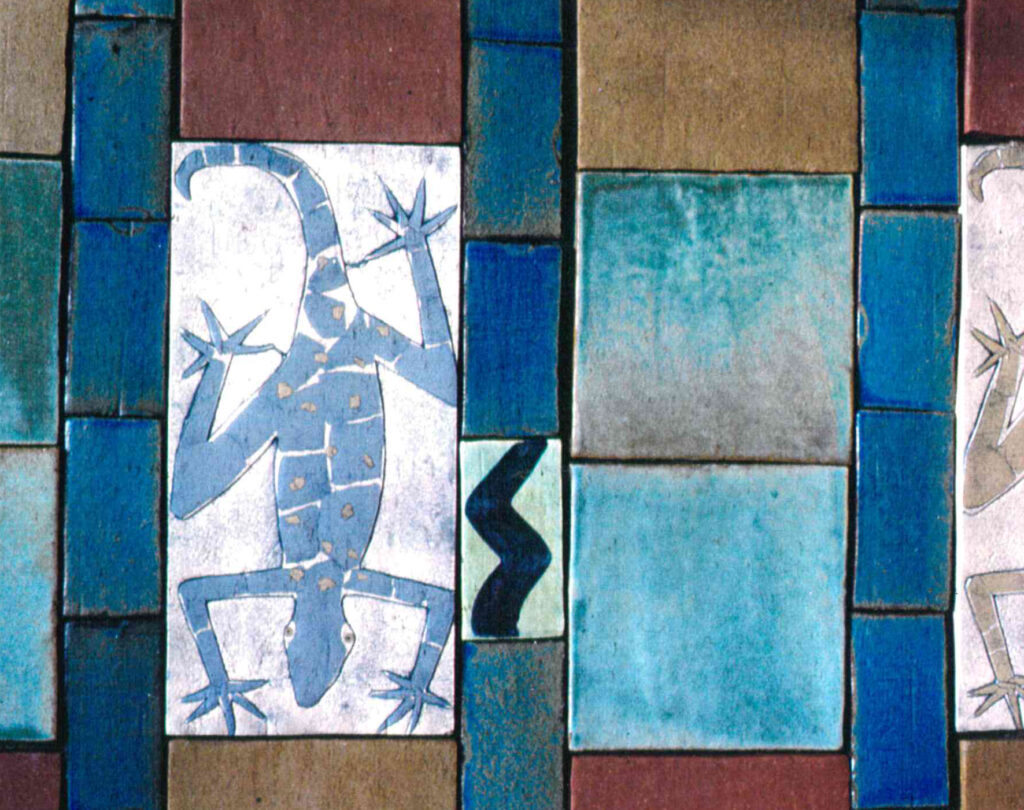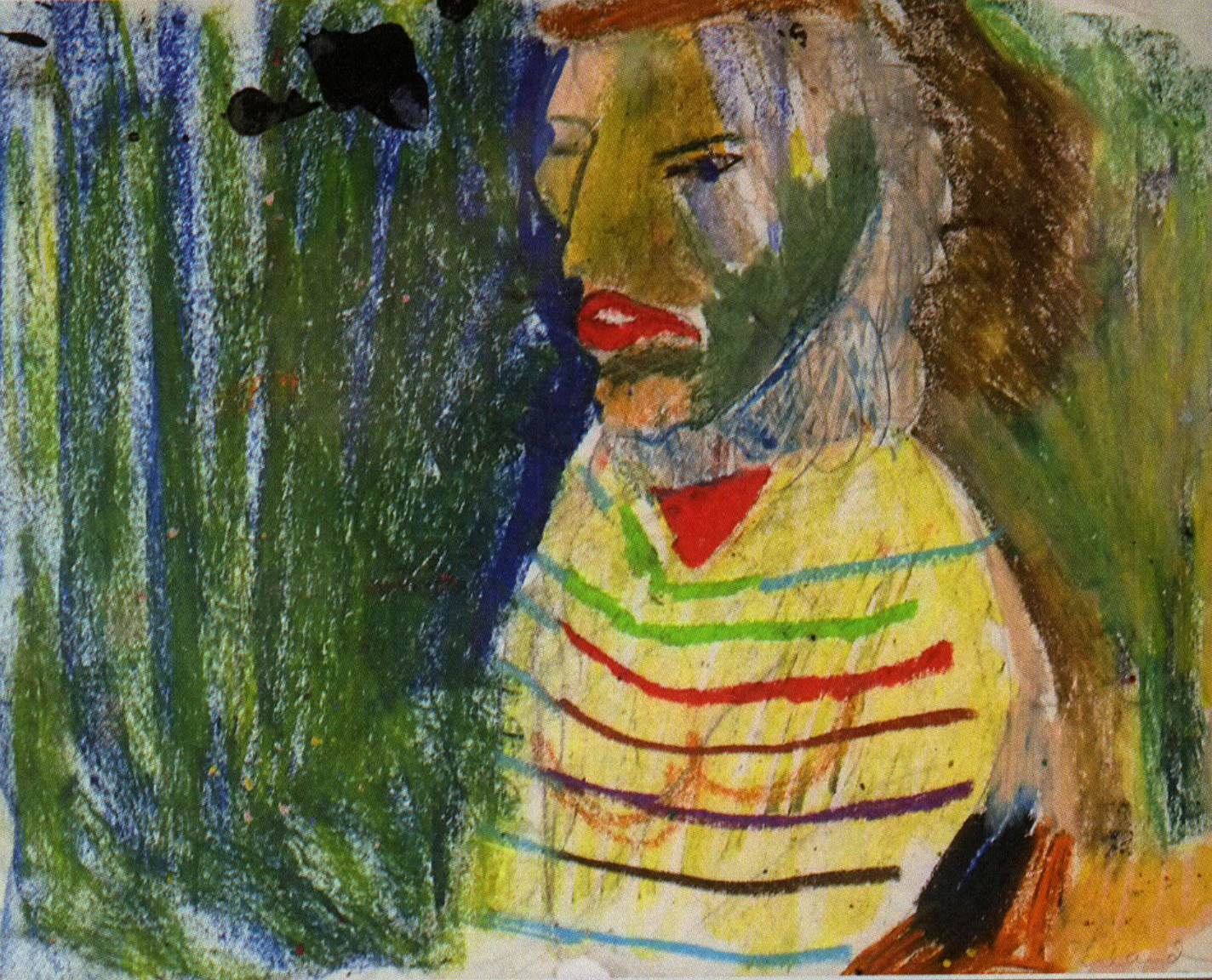


In 1980, the young Anders Widoff had a conversation with Erland Cullberg in his studio. To the question -How do you want to describe your photos? Cullberg answers -My pictures, they are a kind of summary of reality. Maybe a summary overview you get, which takes a day to create, and an evening to ruin. But it squirts color out of my tubes, evenly, evenly, evenly.
Kristina Möller, then Södertälje konsthalls director and curator of the exhibition, writes about her first meeting with Erland Cullberg “It was a traveling exhibition together with Peter Tillberg that was shown at eight different art institutions in Sweden and at the Center Culturel Suédois in Paris 1981-1982. Erland Cullberg showed paintings and Peter Tillberg charcoal drawings. Now we have chosen to show Erland Cullberg together with Anders Widoff. Why? Well, for a while, Anders Widoff abandoned painting and decided to work with film and literary text instead. Then came the film “The Painter” about Erland Cullberg. There was also a film about Peter Tillberg “Days without names” and a radio program about Erland Cullberg. ”
In the same conversation with Widoff, Cullberg describes his relationship to overpainting and color /… / For example, if I paint a composition, I hand out my colors, but I’m not happy with a color that is perhaps too cynical or too adequate, for careless or too realistic in the context – therefore it becomes overpainted. If I get to do that, then I will be very happy with the overpainting. ”.
Kristina Möller describes in an interview, the difficulty of installing Cullberg’s work -It is a lot of color and if you stand too close to the works, it is almost messy and messy. The very fact that you should be a good distance from the large oilpaintings has made it a little difficult to hang the exhibition. Cullberg suffered from a mental illness. – “A widespread sudden mental cold” he called his schizophrenia. The disease prevented him in many ways, but it was alleviated by being able to paint. And he did paint. Usually there were four or five large paintings in progress at the same time.
The exhibition was dominated by Cullberg’s work, a total of 20 oil paintings on canvas, five ink drawings and 15 chalk drawings, and the film The Painter by Widoff. The exhibition also showed Erland Cullberg’s unusual artistry and life story with the help of photos, newspaper articles and props compiled by Ann Grill.
All of the works on display in the art gallery were borrowed from the Rasjö family’s art collection. Kristina Möller tells Länstidningen -It is possible to follow Rasjö’s Cullberg interest in the exhibition. From the first purchased, “Serving” which was actually bought at Strandgalleriet in Södertälje in 1982, to the latest, “Unexpected meeting”, bought in Stjärnhov in 2013. “.
Anders Widoff showed three large paintings from the late 1980s and early 1990s. “The painting” “interior in Paris” /… / represents the studio of the Dutch artist Piet Mondrian in Paris. Here, Ander Widoff wanted to show how Mondrian’s life and work environment were also characterized by neuroplastic ideas. The Mondrian typical square fields, the easel, a chair, a table were painted by Anders in brown opposite Mondrian’s palette of red, yellow and blue. This to depict something read, maybe something past? During this period, Mondrian acted as something of a conversation partner for Anders Widoff. ” The paintings speech and light that were shown are from 1992. Anders Widoff says -I call them “literary landscapes”. The text the handwriting and sometimes the underlining, made up the landscape. The originals could be taken from letters, novels or – as here – postcards. The front pages of the postcard were only included as back information. The factual information referred to more or less familiar images from art history or the general consciousness. They constituted an absence perhaps a shadow. Sometimes postcards were sent to me from friends. The greetings on the backs then constituted a very personal story that stood in contrast to the image not visible in the paintings, but familiar image on the front. Of course, these “literary landscapes” at the time also constituted a personal question of what image and painting could be.
Staffan Rasjö inaugurated the exhibition and had screenings every Saturday during the exhibition.
Sources: Folder about the exhibition quotes from texts by Kristina Möller, director of Södertälje konsthall.
Länstidningen 23/11 2013, Jalmar Carlson’s interview with Kristina Möller. Photo: Paola N Andersson, compiled by Anneli Karlsson.